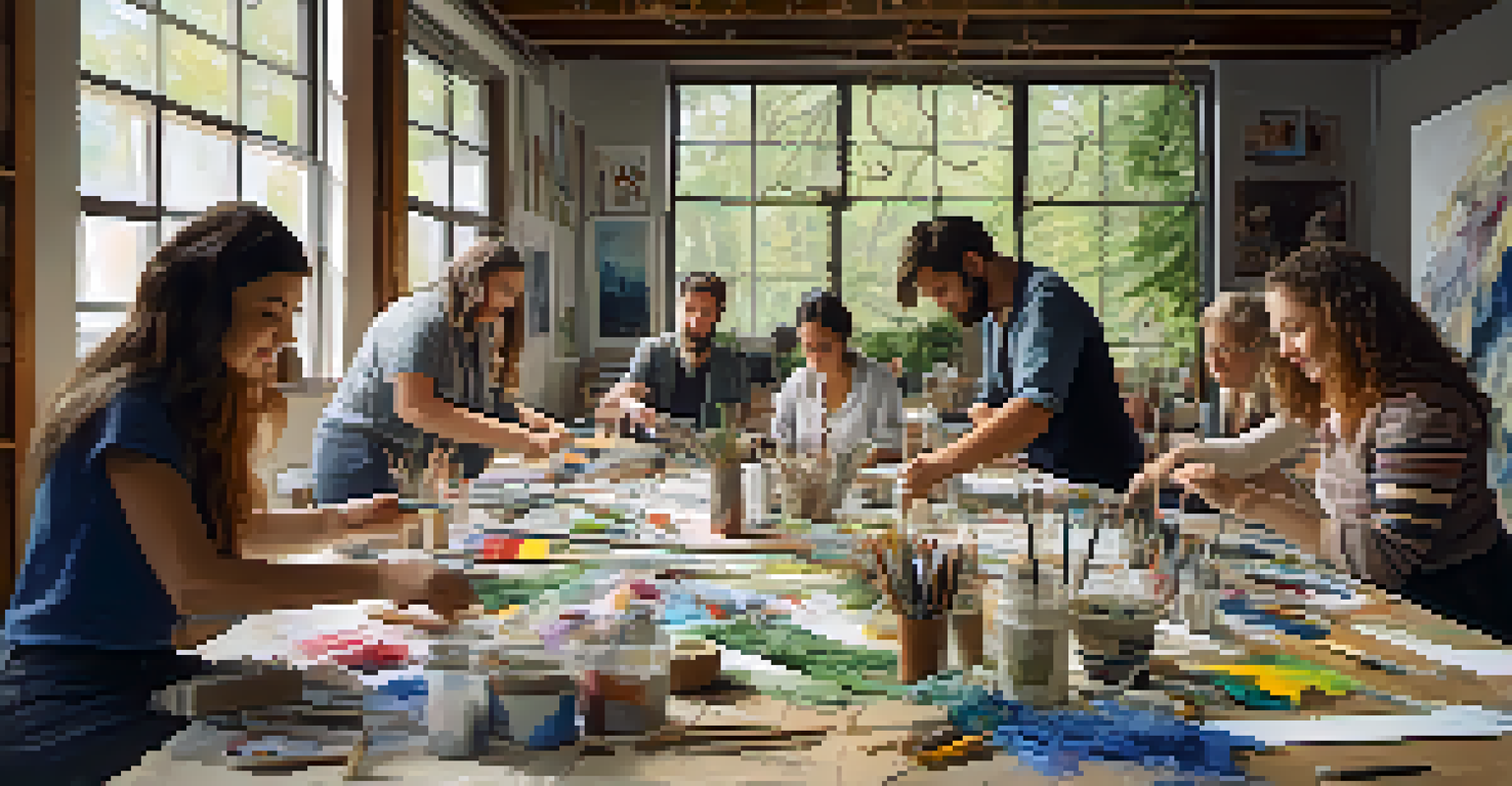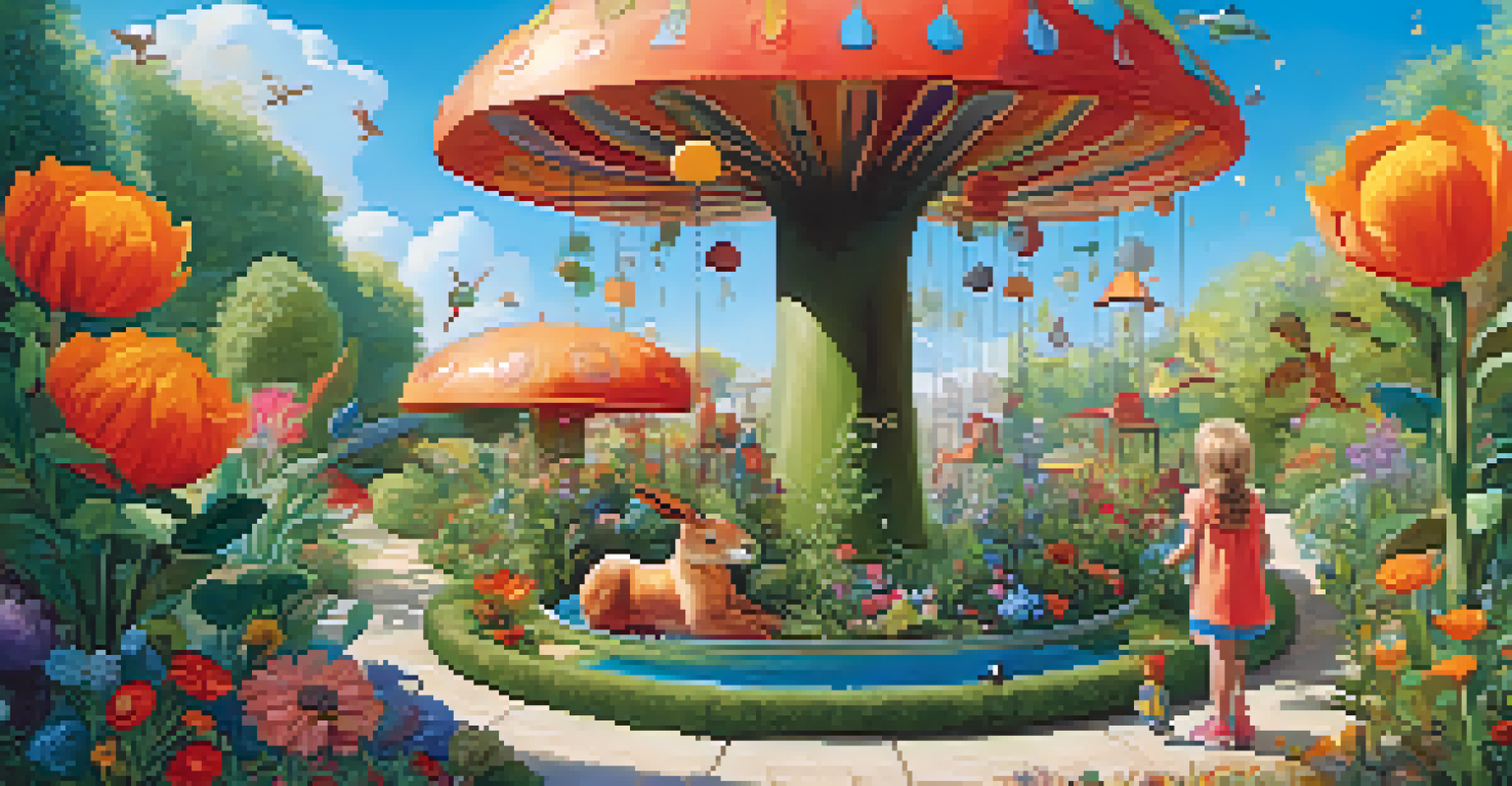Harnessing Play for Greater Freedom in Artistic Expression

Understanding the Role of Play in Art
Play is often seen as a child's pastime, but in the realm of art, it serves a much deeper purpose. It allows artists to explore their creativity without the constraints of expectations or judgment. Just like children use play to make sense of the world, artists can use play to experiment with ideas and techniques.
Every artist dips his brush in his own soul, and paints his own nature into his pictures.
When an artist engages in play, they often find themselves more open to new possibilities. This freedom can lead to unexpected breakthroughs in their work. By letting go of the fear of making mistakes, artists can tap into a reservoir of creativity that is often stifled by rigid structures.
Moreover, play encourages a sense of joy and curiosity, essential ingredients for artistic expression. When artists play, they not only discover new forms of expression, but they also reconnect with the joy of creating. This connection can reinvigorate their passion for art.
The Benefits of Playful Exploration
Engaging in playful exploration allows artists to step outside their comfort zones. For instance, a painter might experiment with unconventional materials or techniques, leading to innovative results. This type of exploration can spark fresh ideas and inspire new directions in their work.

Moreover, playfulness can help reduce the pressure often associated with creating art. When the focus shifts from producing a 'perfect' piece to simply enjoying the process, artists can unlock their true potential. This shift in mindset can lead to a more authentic expression of their vision.
Play Fuels Artistic Creativity
Engaging in play allows artists to explore new ideas and techniques without the constraints of judgment, leading to unexpected breakthroughs.
Additionally, playful exploration fosters collaboration and community. Artists can come together in a playful environment, sharing ideas and techniques. This communal aspect not only enhances individual creativity but also strengthens the bonds within the artistic community.
Creating a Play-Friendly Environment
To harness the power of play, artists should cultivate an environment that encourages experimentation. This can be as simple as setting up a dedicated space filled with inspiring materials and tools. A cluttered, yet inviting space can spark creativity and invite spontaneous exploration.
The creative adult is the child who survived.
Another way to create a play-friendly environment is to establish a routine that incorporates play into the artistic process. For example, dedicating time each week to create without any specific goals can lead to wonderful surprises. This routine can help artists remain connected to their creative spirit.
Furthermore, inviting others to join in the playful process can enhance creativity. Workshops or group sessions that emphasize playful exploration can provide fresh perspectives and ideas. This collaborative approach can lead to new artistic breakthroughs, enriching the experience for everyone involved.
Overcoming Fear of Judgment
One of the biggest barriers to playful artistic expression is the fear of judgment. Artists often worry about how their work will be perceived, which can stifle creativity. However, embracing play allows artists to let go of this fear and focus on the joy of creation.
To overcome this fear, artists can practice self-compassion and remind themselves that not every piece needs to be a masterpiece. Just as children play without worrying about being 'good,' artists can benefit from a similar mindset. This shift can foster a more open and explorative approach to their work.
Collaboration Enhances Creativity
Playful exploration fosters collaboration among artists, strengthening community bonds and inspiring fresh perspectives.
Additionally, surrounding oneself with supportive peers can help alleviate the fear of judgment. Sharing playful explorations in a safe space can build confidence and encourage experimentation. This support system can empower artists to take risks and embrace their unique voices.
Incorporating Play in Artistic Techniques
Incorporating play into artistic techniques can transform the way artists work. For instance, an artist may choose to mix different mediums, such as painting with both watercolors and acrylics. This playful blending can lead to stunning visual outcomes that wouldn't have emerged through traditional methods.
Another technique is to play with randomness and chance, allowing accidents to inform the creative process. Artists can throw paint, use unconventional tools, or even collaborate with nature to create unexpected results. This element of surprise can lead to new insights and artistic directions.
Furthermore, artists can experiment with different themes or subjects in a playful manner. Daring to portray the mundane or exploring fantastical concepts can open up new avenues for expression. This playful approach encourages artists to think outside the box and embrace their imagination.
Play and Emotional Connection in Art
Play has a powerful ability to evoke emotions, both for the artist and the audience. When artists create from a place of playfulness, their joy often translates into their work. This emotional connection can resonate deeply with viewers, making the art more impactful.
Moreover, playful art can foster a sense of nostalgia and innocence, drawing people in. Think of the whimsical styles of children's book illustrations that evoke a sense of wonder. By tapping into this playfulness, artists can create pieces that resonate on a personal level.
Overcoming Fear Unlocks Expression
By letting go of the fear of judgment, artists can embrace play and channel their emotions into more authentic and impactful work.
In addition, the emotional freedom that comes with play can lead to cathartic expressions. Artists can channel their feelings into their work without the constraints of traditional forms. This authenticity can create a profound connection between the artist, their work, and the audience.
The Future of Play in Artistic Practices
As the art world continues to evolve, the role of play in artistic practices is gaining recognition. Many contemporary artists are embracing playful methods to challenge norms and redefine boundaries. This shift is not only refreshing but also essential for the continued growth of artistic expression.
Furthermore, the integration of technology into art has opened up new avenues for play. Virtual reality, interactive installations, and digital art offer exciting opportunities for playful exploration. These innovations invite artists and audiences alike to engage in new ways, pushing the limits of creativity.

Ultimately, the future of art lies in the ability to harness playfulness. By encouraging freedom of expression and experimentation, artists can continue to innovate and inspire. As we move forward, embracing play will be key to unlocking the full potential of artistic expression.